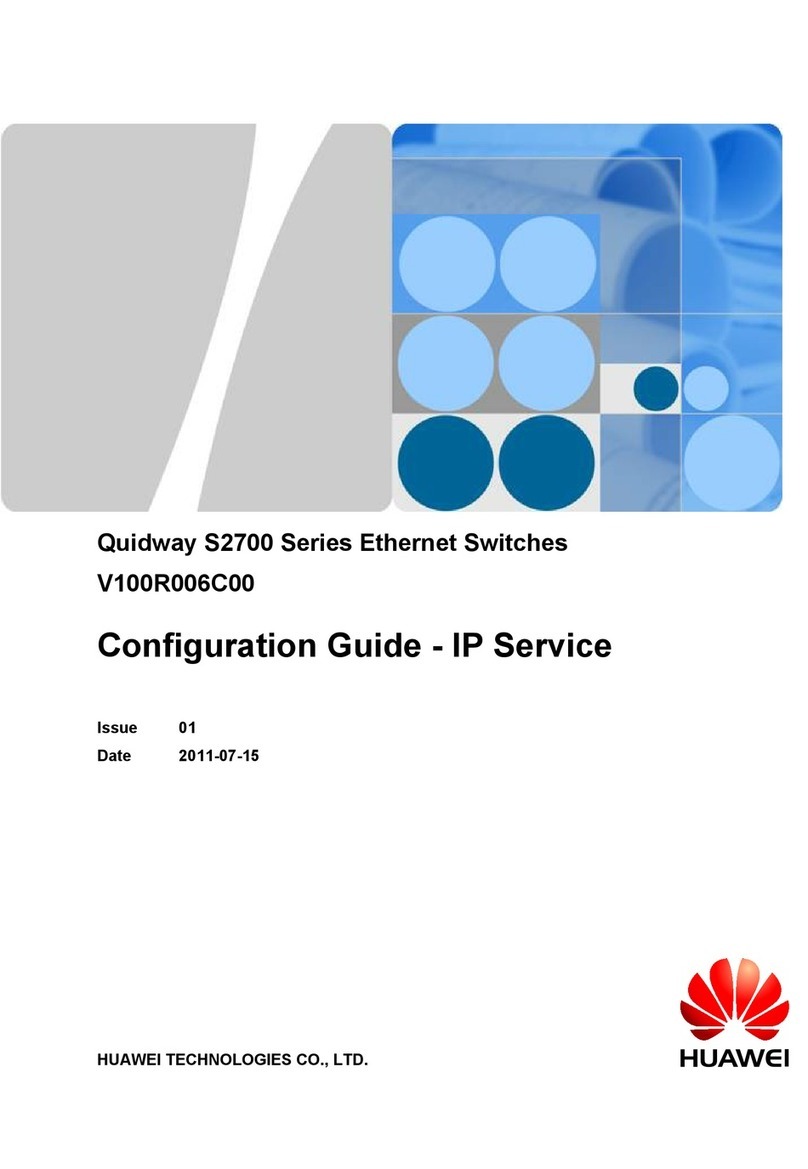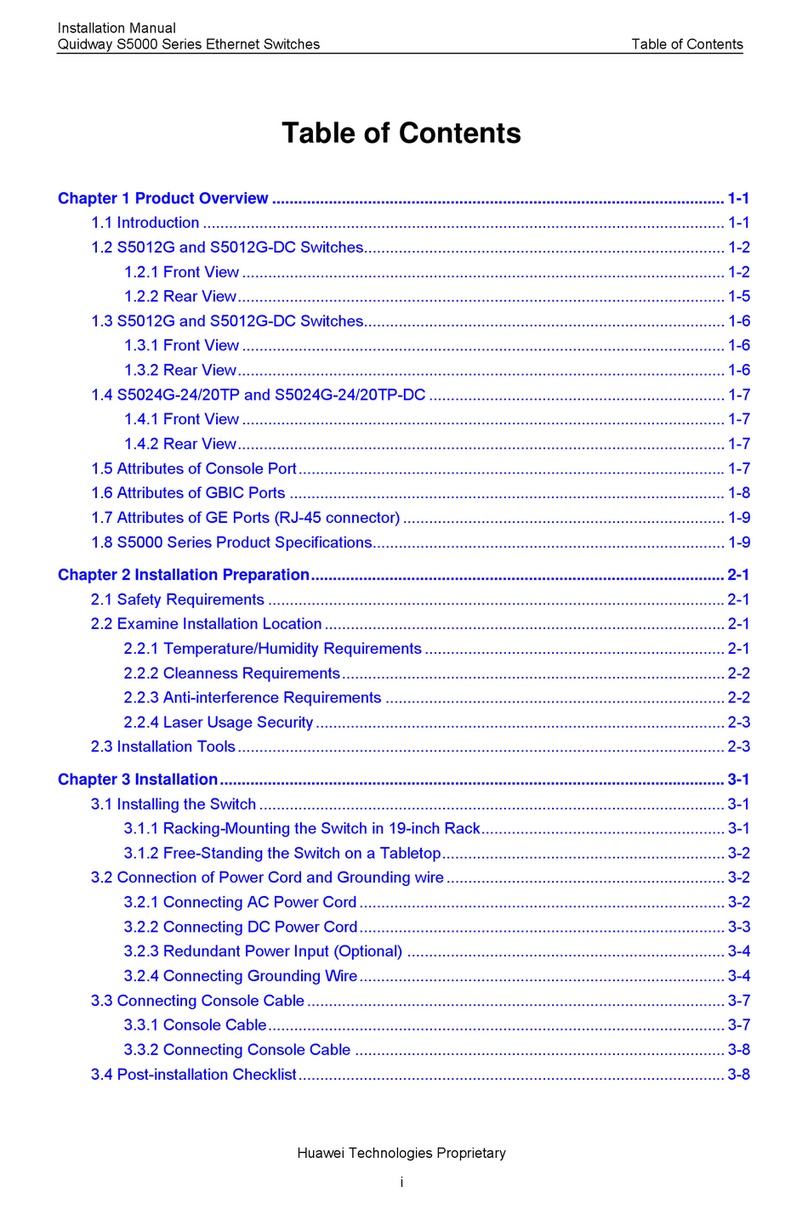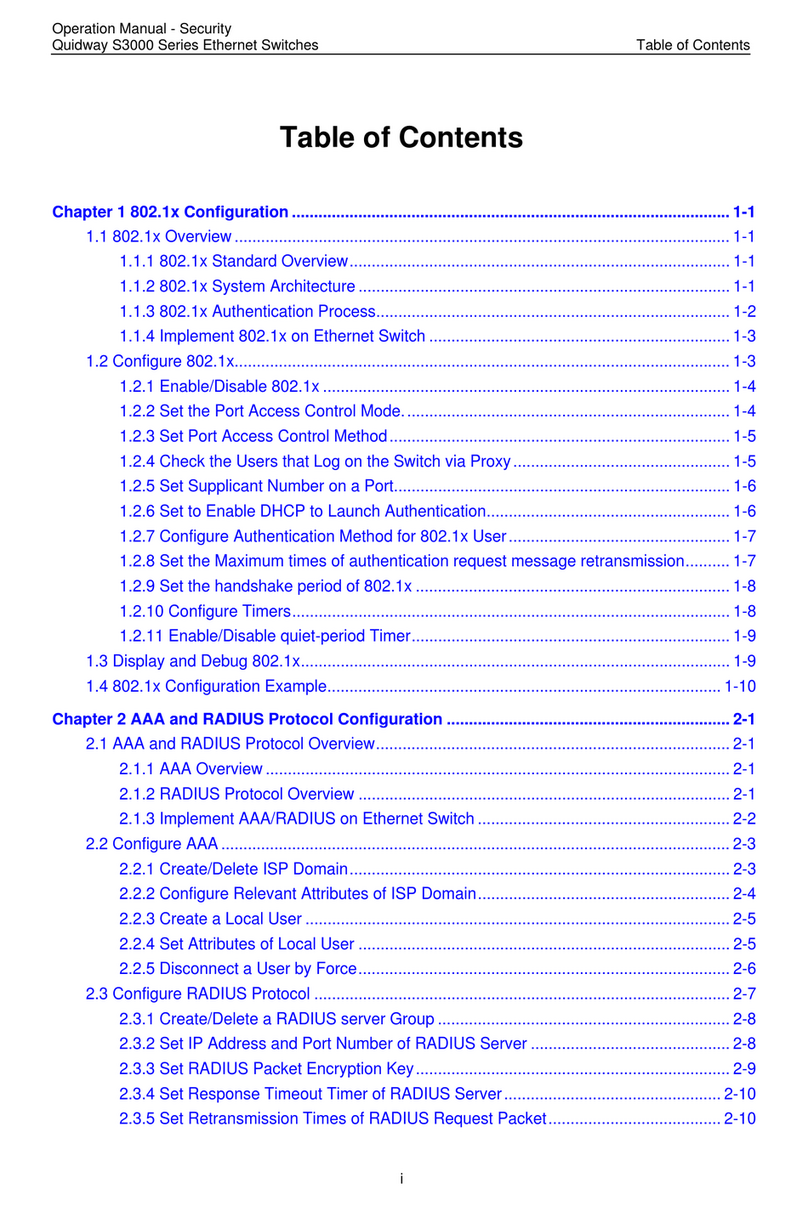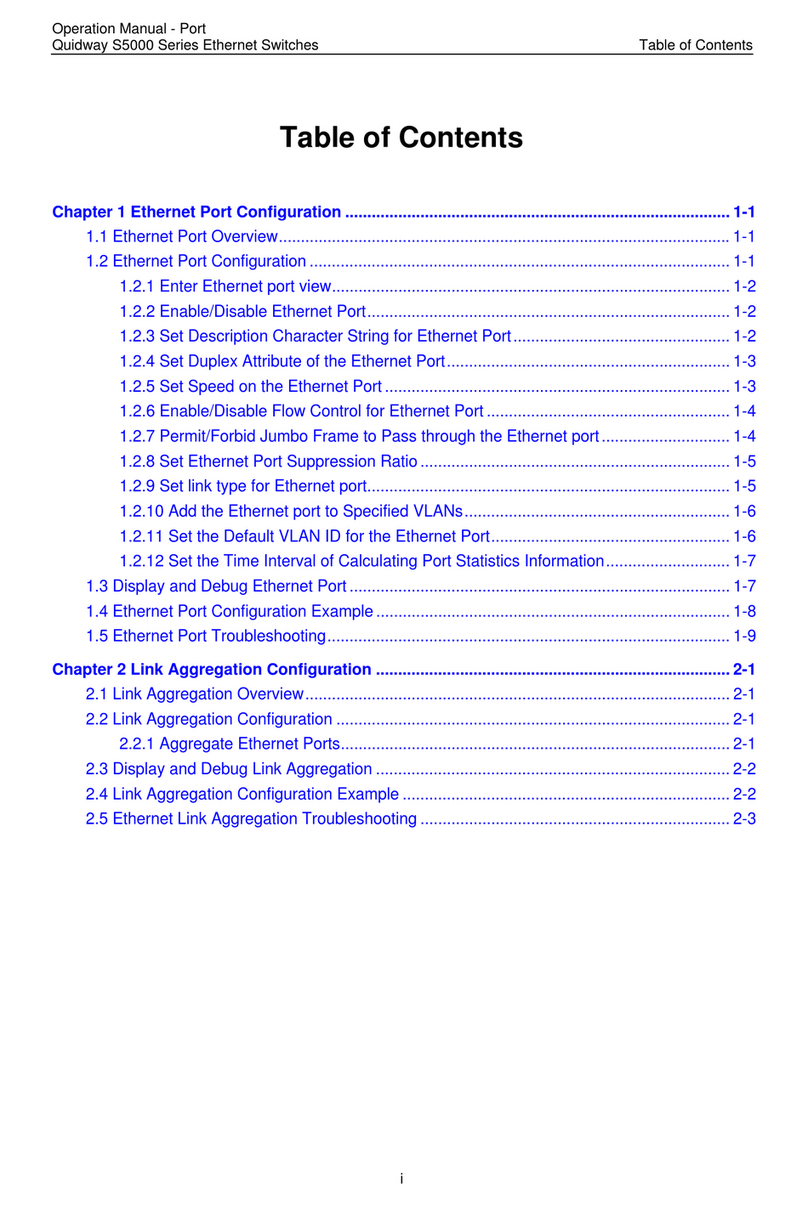Operation Manual - QinQ-BPDU Tunnel
Quidway S3500-EA Series Ethernet Switches Chapter 2 BPDU Tunnel Configuration
Huawei Technologies Proprietary
2-1
Chapter 2 BPDU Tunnel Configuration
2.1 Introduction to BPDU Tunnel
2.1.1 Problems in QinQ-Enabled Network
In a QinQ implementation, as the service provider network is transparent to customer
networks, any redundant links between the two bring about loops. To solve this problem,
the service provider network need to be capable of transmitting STP/RSTP/MSTP
packets transparently, through which spanning trees of customer networks can be
established cross the service provider network and loops can thus be eliminated.
STP/RSTP/MSTP identifies the network topology by transmitting bridge protocol data
units (BPDUs) between network devices. For the purpose of transmitting BPDUs
transparently in service provider networks, the following requirements must be
satisfied:
zAll branches in a customer network can receive their own BPDUs.
zBPDUs of different customer networks must be isolated from each other.
The above mentioned can be achieved in the following ways.
zWhen a port receives a BPDU, tag it with the VLAN tag assigned to the customer
by the service provider. Thus, the BPDU can be forwarded as a normal packet in
the service provider network.
zTo prevent a BPDU from being processed by devices in the service provider
network, assign a specific multicast MAC address to the tagged BPDU as the
destination MAC address. At the same time, tag the BPDU with the VLAN tag of
the service provider network. Thus, BPDUs can be forwarded in VLANs of the
service provider network; on the other hand, a BPDU traveling alone a BPDU
tunnel can be identified by the specific multicast MAC address. When the BPDU
leaves the service provider network, its outer VLAN tag is removed and its
destination MAC address is restored to the original destination MAC address of
the BPDU.
2.1.2 Why BPDU Tunnel
BPDU tunnel enables customer networks to exchange BPDUs transparently through
QinQ-enabled devices in service provider networks.
After you enable STP BPDUs to be transparently transmitted in service provider
networks, uniform STP calculation can be performed in different customer networks,
and the spanning trees of customer networks and those in service provider networks
are independent of each other.































